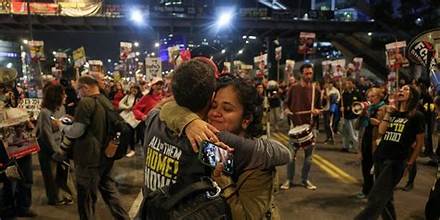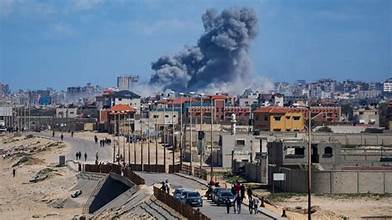The long-standing conflict between Israel and Hamas has once again entered a critical juncture as reports confirm that Hamas has accepted a new Gaza ceasefire proposal. This development comes at a time when the region has been witnessing intense violence, widespread humanitarian suffering, and mounting international pressure for an end to hostilities. The acceptance of this ceasefire offers a glimmer of hope for millions of civilians trapped in the ongoing cycle of conflict.
Background of the Conflict
The conflict between Israel and Hamas, the militant group that governs the Gaza Strip, has persisted for decades, marked by repeated escalations of violence. The most recent round of clashes saw devastating airstrikes, rocket attacks, and ground operations that left thousands dead or injured and displaced countless families. Residential areas, hospitals, schools, and vital infrastructure were destroyed, worsening an already dire humanitarian crisis in Gaza.
Efforts by international mediators, particularly Egypt, Qatar, and the United Nations, have been ongoing to broker peace agreements. While temporary ceasefires have been reached in the past, they often collapse due to unresolved political disputes, border restrictions, and retaliatory attacks. This new ceasefire agreement, however, has drawn significant global attention, with many hoping it can lay the groundwork for longer-term peace.
The New Ceasefire Proposal
The ceasefire proposal reportedly includes several key components designed to halt immediate hostilities and address urgent humanitarian needs. While details remain confidential, sources indicate that the agreement involves:
- An immediate cessation of military operations by both Israel and Hamas.
- Facilitated entry of humanitarian aid into Gaza, including food, water, medical supplies, and fuel.
- Release of hostages and prisoners, with arrangements for international organizations to monitor the process.
- Reconstruction efforts supported by international donors to rebuild damaged infrastructure in Gaza.
- Commitments from both sides to engage in further negotiations toward a more durable peace framework.
By agreeing to these terms, Hamas has signaled a willingness to cooperate with mediators and address the humanitarian catastrophe that has gripped Gaza.

Humanitarian Impact
The situation in Gaza has been described by international organizations as catastrophic. Hospitals have struggled to operate without fuel and essential medicines. Water shortages, collapsed sanitation systems, and overcrowded shelters have increased the risk of outbreaks of disease. For civilians, especially women and children, the burden has been unbearable.
With Hamas accepting the ceasefire, humanitarian aid organizations now have a greater opportunity to deliver relief to the people in need. Aid convoys are expected to cross into Gaza, bringing much-needed supplies to communities that have endured weeks of bombardment and isolation. This moment could be a turning point in preventing further loss of innocent lives.
Regional and Global Reactions
The announcement has been met with cautious optimism across the region and beyond. Egypt and Qatar, who played a vital role in mediating the agreement, welcomed Hamas’s decision and called on Israel to uphold its commitments. The United Nations emphasized that both parties must adhere strictly to the ceasefire to prevent another collapse.
The United States, European Union, and several Arab states have also welcomed the move, urging all stakeholders to seize this opportunity to move toward a more comprehensive peace settlement. However, analysts warn that without addressing the underlying political and territorial disputes, the ceasefire may only provide temporary relief.
Challenges Ahead
While the acceptance of the ceasefire is a positive step, challenges remain significant. Trust between Israel and Hamas is extremely fragile, with decades of hostility fueling deep mistrust. Any violation, even on a small scale, could trigger a new round of violence. Moreover, disputes over border controls, economic restrictions, and governance in Gaza are yet to be resolved.

Another pressing issue is the reconstruction of Gaza. The destruction of homes, schools, and hospitals will require billions of dollars in international aid. Ensuring that reconstruction efforts are not derailed by corruption, political interference, or renewed hostilities will be essential.
Path Toward Lasting Peace
For many observers, the current ceasefire provides a critical opportunity for renewed dialogue. Long-term peace will depend on addressing core issues such as Palestinian statehood, Israeli security concerns, the blockade of Gaza, and the broader Israeli-Palestinian conflict.
Peace advocates argue that without a sustainable political solution, any ceasefire will remain temporary. Regional and global actors must push for serious negotiations that prioritize diplomacy over military action. Only through dialogue, mutual concessions, and trust-building measures can a lasting peace become possible.
Conclusion
Hamas’s acceptance of the new Gaza ceasefire proposal has offered a brief but important moment of hope in a region scarred by decades of war. While skepticism remains about the durability of the truce, the immediate relief it brings to civilians in Gaza cannot be understated. The coming days will be crucial in determining whether this agreement marks the beginning of a more stable future or yet another short-lived pause in hostilities.
For now, the world watches with cautious optimism, hoping that this ceasefire can pave the way for genuine peace efforts and, ultimately, a resolution to one of the most protracted conflicts in modern history.



